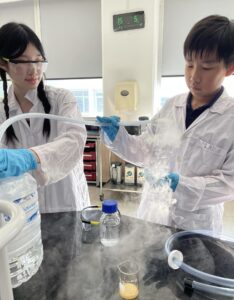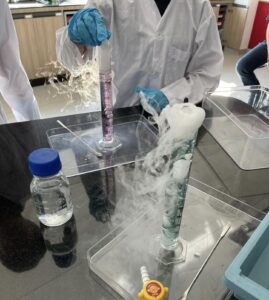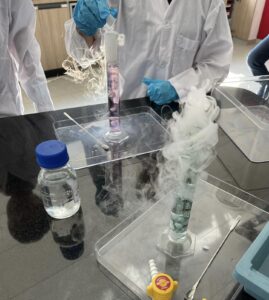In this first experiment, we decided to do a twist on the classic dry ice experiemnt by adding Sodium Hydroxide and Universal indicator to water, to first form an alkaine solution. Then, we let the students add dry ice into the solution, resulting in a gradual colour change from purple to yellow as the pH was reduced. The science behind this, we explained, was that the dry ice (solid carbon dioxide ), as a non-metal oxide, reacted with water to produce an acid, which leads to the solution becoming more acidic.





